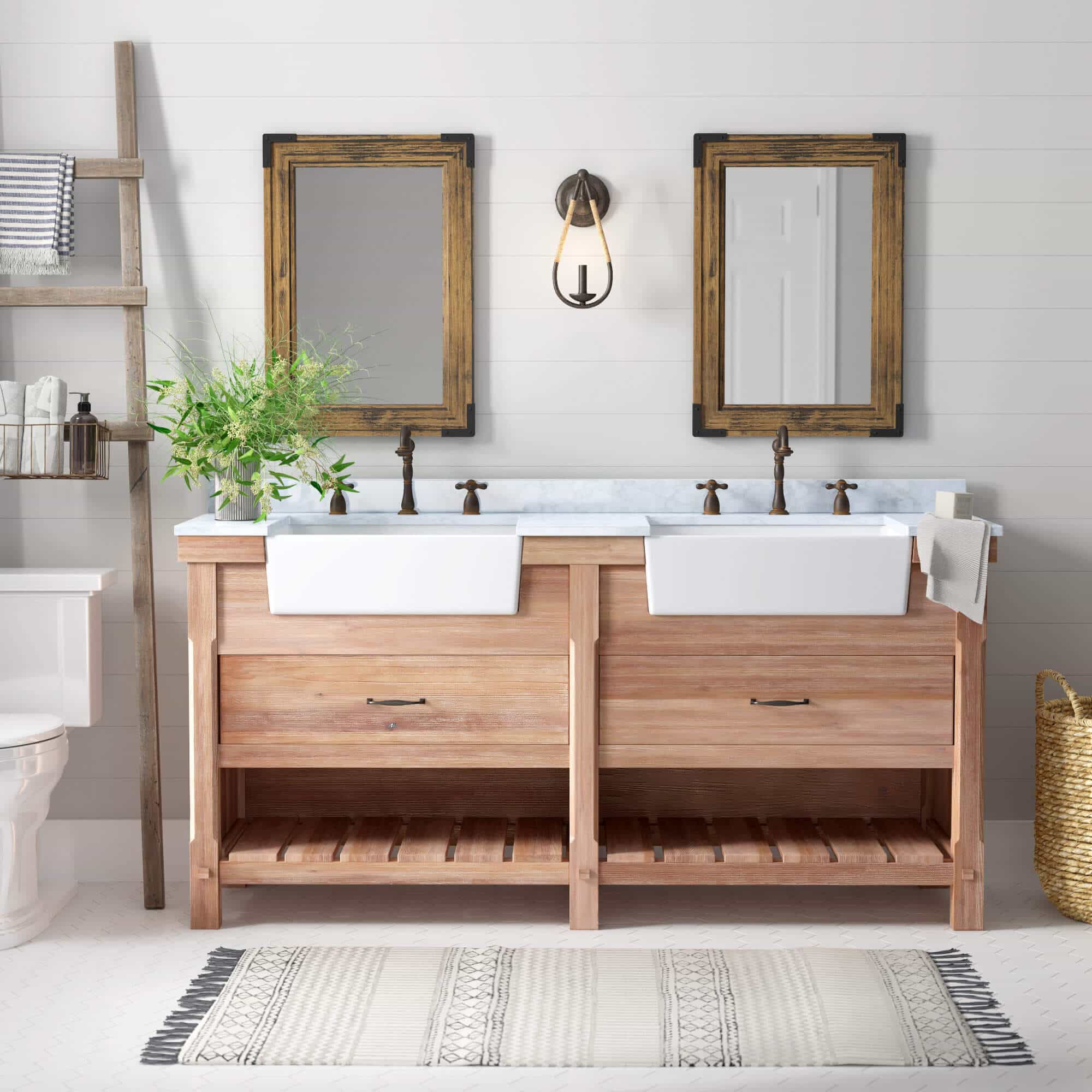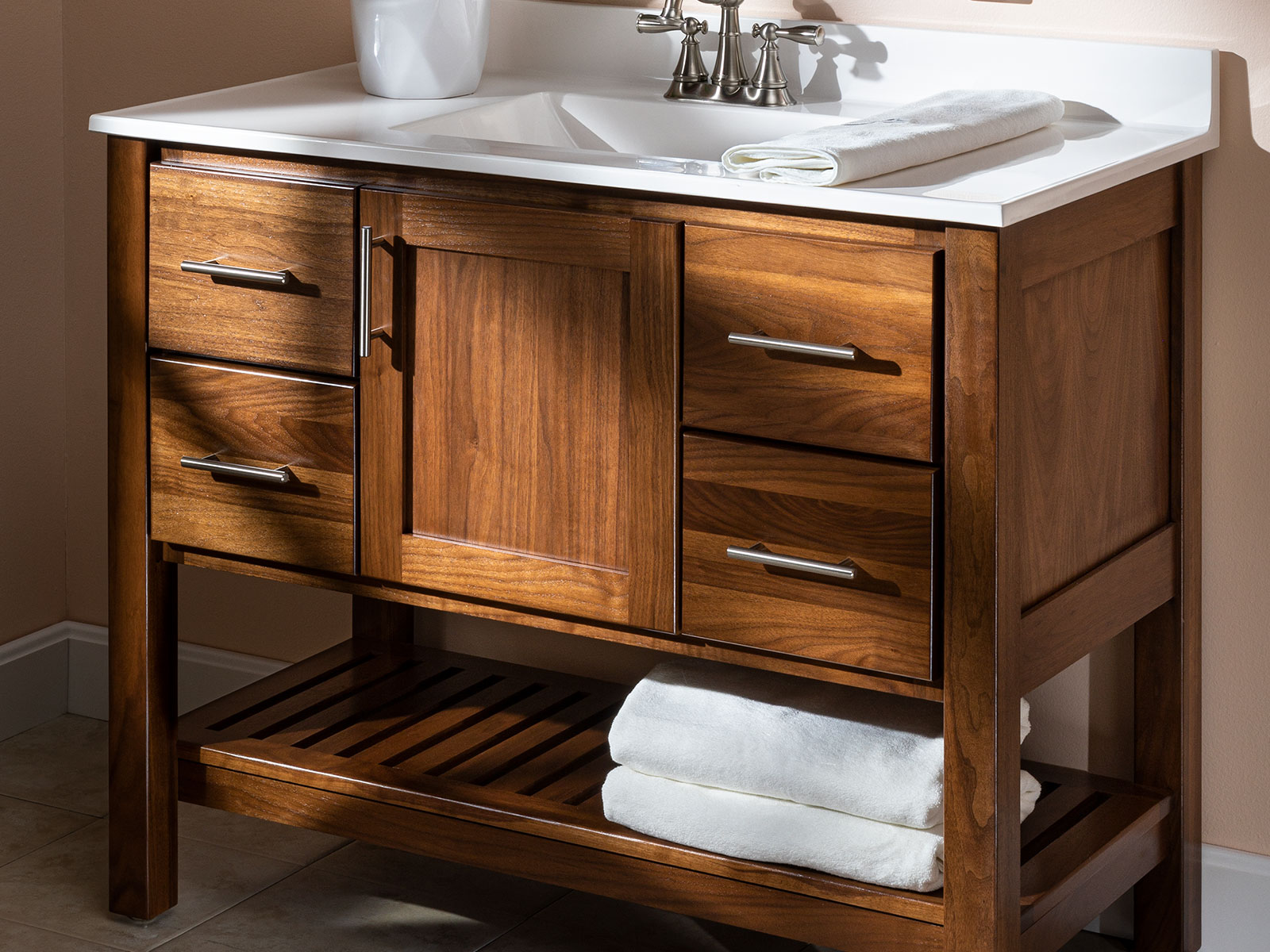Types of Bathroom Vanities: List Vanities Bathroom Furniture

Choosing the right bathroom vanity is crucial for both functionality and aesthetics. A vanity serves as a focal point in your bathroom, offering storage and a place for your sink. The type of vanity you choose will depend on your bathroom’s size, style, and personal preferences. Let’s explore the different types of bathroom vanities available.
Freestanding Vanities
Freestanding vanities are a popular choice due to their versatility and independent design. They stand alone and are not attached to the wall, offering flexibility in placement and a more traditional look.
- They are great for adding a touch of elegance to your bathroom.
- They offer ample storage space, often with drawers and cabinets.
- They are relatively easy to install.
However, freestanding vanities have some drawbacks:
- They can take up more floor space than wall-mounted vanities.
- They may be more difficult to clean under and around.
- They may not be suitable for smaller bathrooms.
Wall-Mounted Vanities
Wall-mounted vanities are a space-saving option that can make your bathroom feel more spacious. They are mounted directly to the wall, leaving the floor clear.
- They are perfect for smaller bathrooms.
- They create a modern and minimalist look.
- They are easier to clean underneath.
However, wall-mounted vanities also have some disadvantages:
- They may not offer as much storage space as freestanding vanities.
- They require more specialized installation, as they need to be securely attached to the wall.
- They may not be suitable for older homes with weak walls.
Corner Vanities
Corner vanities are designed to fit into a corner of the bathroom, making efficient use of space. They are a great option for small bathrooms or bathrooms with awkward layouts.
- They maximize space in corners.
- They offer a unique and stylish look.
- They can be customized to fit the specific corner of your bathroom.
However, corner vanities also have some drawbacks:
- They may have limited storage space compared to freestanding or wall-mounted vanities.
- They can be more challenging to install and access.
- They may not be suitable for all bathroom layouts.
| Type | Advantages | Disadvantages | Suitable for |
|---|---|---|---|
| Freestanding | Versatility, ample storage, easy installation, traditional look | Takes up more space, difficult to clean under, may not be suitable for small bathrooms | Large bathrooms, traditional styles, ample storage needs |
| Wall-Mounted | Space-saving, modern look, easy to clean underneath | Limited storage, requires specialized installation, may not be suitable for weak walls | Small bathrooms, modern styles, limited storage needs |
| Corner | Maximizes space, unique look, customizable | Limited storage, challenging installation, may not be suitable for all layouts | Small bathrooms, awkward layouts, space optimization |
Materials Used for Bathroom Vanities

Bathroom vanities are a key element of any bathroom, offering storage, functionality, and style. When choosing a bathroom vanity, one of the most important considerations is the material used for its construction. Different materials offer distinct advantages and disadvantages in terms of durability, aesthetics, and price.
Common Materials for Bathroom Vanities, List vanities bathroom furniture
Choosing the right material for your bathroom vanity depends on your individual preferences, budget, and the style of your bathroom.
| Material | Pros | Cons | Price Range |
|---|---|---|---|
| Wood |
|
|
$500-$5,000+ |
| Laminate |
|
|
$100-$1,000 |
| Marble |
|
|
$1,000-$10,000+ |
| Granite |
|
|
$1,500-$15,000+ |
Essential Features of Bathroom Vanities

Choosing the right bathroom vanity is crucial for both functionality and aesthetics. It’s the centerpiece of your bathroom, so it’s important to consider all the essential features before making a purchase.
Sink Type
The sink is an integral part of any bathroom vanity. It’s where you wash your hands, brush your teeth, and perform other daily routines. There are several types of sinks available, each with its own advantages and disadvantages.
- Undermount Sinks: These sinks are mounted underneath the countertop, creating a seamless and elegant look. They are also easy to clean as there is no rim to collect dirt and grime.
- Top-Mount Sinks: These sinks are placed on top of the countertop and are typically less expensive than undermount sinks. They are also easier to install.
- Vessel Sinks: These sinks are freestanding and sit on top of the countertop. They add a unique and stylish touch to the bathroom.
| Feature | Options | Advantages | Disadvantages |
|---|---|---|---|
| Sink Type | Undermount, Top-Mount, Vessel | Undermount: Seamless look, easy to clean; Top-Mount: Affordable, easy to install; Vessel: Stylish, unique | Undermount: More expensive, difficult to install; Top-Mount: Less stylish; Vessel: Limited countertop space |
Storage Space
Bathroom vanities are designed to provide ample storage space for toiletries, towels, and other bathroom essentials. The amount of storage space you need will depend on the size of your bathroom and your personal storage needs.
- Drawers: Drawers provide organized storage for smaller items, such as toiletries, makeup, and jewelry.
- Cabinets: Cabinets offer larger storage space for towels, linens, and other bulky items.
- Open Shelves: Open shelves are a good option for displaying decorative items or storing frequently used items.
| Feature | Options | Advantages | Disadvantages |
|---|---|---|---|
| Storage Space | Drawers, Cabinets, Open Shelves | Drawers: Organized storage for smaller items; Cabinets: Large storage space; Open Shelves: Easy access, display items | Drawers: Can be difficult to access; Cabinets: Can take up a lot of space; Open Shelves: Can be messy |
Countertop Material
The countertop is the surface where you will be placing your sink, toiletries, and other bathroom items. It should be durable, easy to clean, and stylish.
- Granite: Granite is a natural stone that is known for its durability and beauty. It is also resistant to scratches and stains.
- Quartz: Quartz is an engineered stone that is made from crushed quartz crystals. It is non-porous, making it very easy to clean.
- Marble: Marble is a luxurious natural stone that adds elegance to any bathroom. However, it is more porous than granite or quartz and requires more maintenance.
| Feature | Options | Advantages | Disadvantages |
|---|---|---|---|
| Countertop Material | Granite, Quartz, Marble | Granite: Durable, beautiful, resistant to scratches and stains; Quartz: Non-porous, easy to clean; Marble: Luxurious, elegant | Granite: Can be expensive; Quartz: Can be expensive; Marble: Porous, requires more maintenance |
